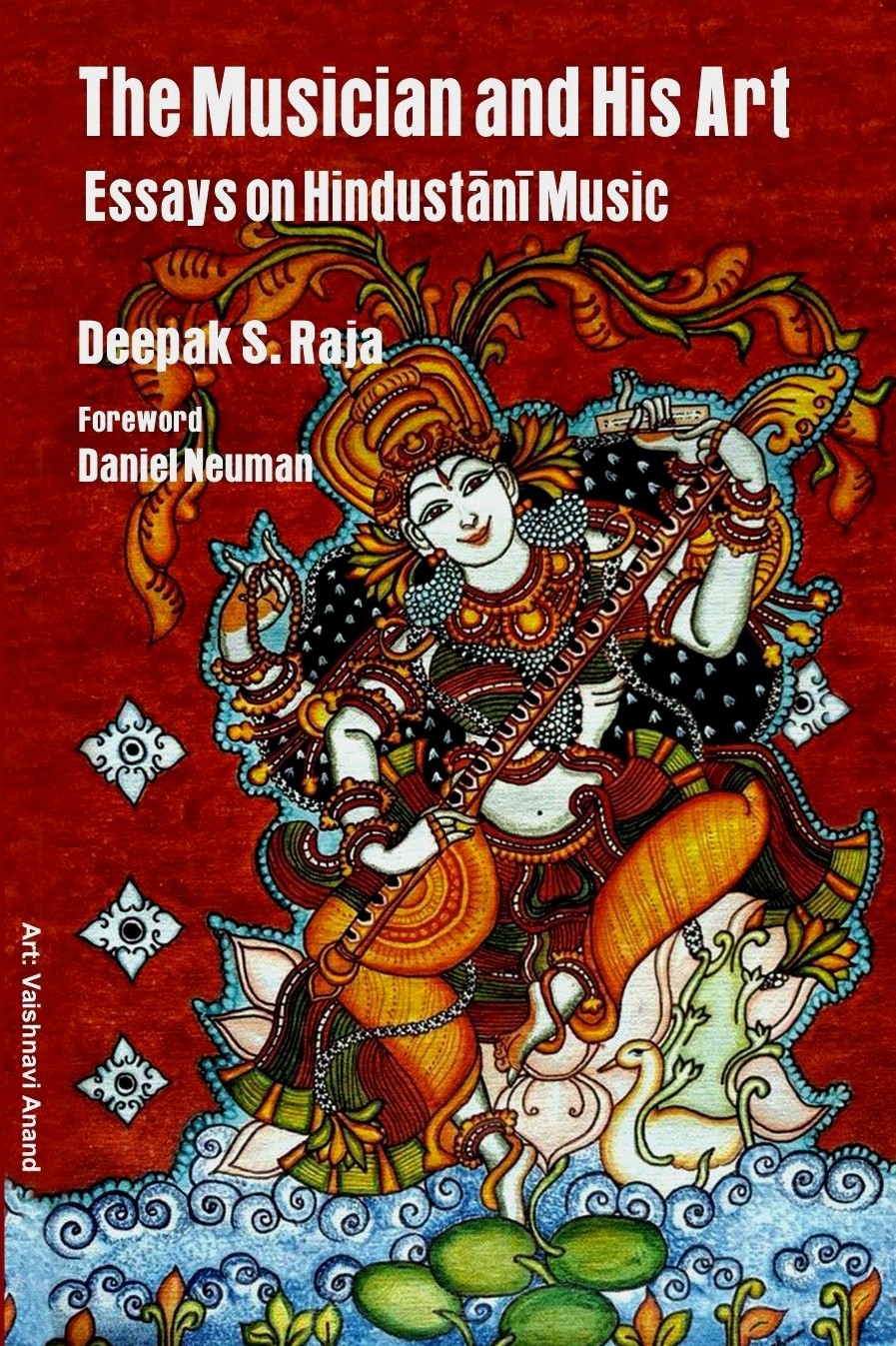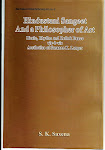BOOK REVIEW
Title: Bhairavi
Sub-title: The global impact of Indian music
Author: Peter Lavezzoli
Publishers: Harper Collins Publishers India. (2009)
Pgs: 430 (including glossary and bibliography)
Paperback: Indian Price: Rs. 450.00
In its obituary for Ustad Ali Akbar Khan, the New York Times quoted Peter Lavezzoli's study on the influence of Indian music in the West, but more particularly, the US. His personal credibility amongst the American intelligentsia must therefore be acknowledged. For this very reason, the infirmities of the present work need also to be considered.
Lavezzoli’s work, perhaps the first of its kind, is an eminently readable and well researched account of the fifty years in which Western music discovered the Indian sensibility. The title “Bhairavi” commemorates the performance of the raga in 1955 by Ustad Ali Akbar Khan and Pandit Chatur Lal on the first ever LP of Hindustani music, recorded in New York, with Yehudi Menuhin’s spoken introduction. Being an American, the author can be forgiven for the subtitle of the book, which virtually equates the US with the world.
Despite the substantial, and historically justified, presence of Pandit Ravi Shankar throughout the book – including the Foreword penned by the maestro -- it is not a biography of India’s supreme cultural ambassador. It is a panoramic historical survey, covering a large number of Western personalities in search of their musical selves through the adoption of Indian approaches to musical expression. In many cases, these journeys coincided with their sojourns through Indian religions and spirituality. This might be a regrettable coincidence because it could have hindered the appreciation of Indian classical music as an organic art form. The author himself is not entirely free from such fuzzy notions, as he frequently describes Indian classical music as “mystic”, “spiritual” and “sacred”, and glibly throws around phrases like “Nada Bramha” and “Nada Yoga”.
The book was first published in the US in 2006, and appears to address a western audience. The glossary appended to the book, for instance, provides notes on Indian musical genres such as Dhrupad, Khayal, and Thumree, but ignores Western genres such as bebop, rock, pop, reggae, bluegrass, ragtime, funk, jazz, modern jazz, free jazz, electronica, hip hop, ambient music, trance music, fusion etc. These omissions will bother Indian readers who are not well-versed in Western genres of popular music.
Lavezzoli, an American vocalist, drummer and author, studies Dhrupad vocalism and the Tabla in India. He undertook the present endeavor to explore what it was about Indian – primarily Hindustani – music that attracted western musicians. The book pursues the theme through elaborate biographical notes, riveting descriptions of their landmark performances and recordings, and interviews with several important personalities.
The book does a thorough job of documenting the contribution of the powerhouses on both sides – Pandit Ravi Shankar, Ustad Ali Akbar Khan, Ustad Alla Rakha, Ustad Zakir Hussain and Pandit Pran Nath amongst Indian missionaries, and Yehudi Menuhin, Zubin Mehta, Philip Glass, John McLaughlin, George Harrison, Mickey Hart, Terry Riley, La Monte Young, and John Coltrane amongst the receptive Western influentials. Beyond this first generation of cross-cultural pioneers, the book also does justice to the roles of the subsequent generations of musicians who have shaped new genres of multi-cultural music.
Amongst the interviews featured in this book, I liked the one with percussionist Mickey Hart of the Grateful Dead, who debunks the idea of “World Music”. Of the many interviews I have read of Pandit Ravi Shankar, the one he gave Lavezzoli will qualify amongst the most candid.
The author’s understanding of Indian classical music is as rudimentary as the adoption of its features by Western musicians. According to the book, Indian music is primarily about tonality (a fixed scale base), improvisation based on scales or modes, bending the notes in executing the melody, using the Tanpura or other types of drones, executing melody on Indian instruments, and a cyclical approach to melody and rhythm. The very foundation of Indian classical music -- the archetypal character of ragas – finds no place in this configuration of features. According to the author, the raga is merely “a specific melody in Indian classical music, based on a scale or a mode, but with a unique pattern of movements”. Even the notion of “Rasa” has been excluded from this explanation, though covered by a separate entry in the glossary.
The author is often on slippery ground when he deals with music. A few examples: Disregarding history, he observes that “the Karnataka music of the Hindu temples mutated into North Indian Hindustani during the reign of Akbar, when Muslim styles and instruments tempered the Vedic character of music” (Pg. 413). In my study of books on Hindustani music -- whether by Indians or aliens -- I have yet to come across a more ill-informed and confused observation. An eyebrow must also be raised when he calls Malkauns “one of the most difficult ragas to master” (Pg. 129). He speaks of “composing ragas” in a wide range of rhythmic cycles (Pg. 70), when, in fact, he means “composing bandishes”.
Lavezzoli also has considerable difficulty with Indian languages and names. In his chapter on Ustad Alauddin Khan and Ustad Ali Akbar Khan, he often refers to his subject as, simply, Khan or Khansahib, making you wonder which of the Khans he is speaking of. He mentions “The Ali Brothers” (Pg. 232) without being specific, unaware that the subcontinent has produced two famous pairs of Ali Brothers – Nazakat and Salamat Ali, and Amanat and Fateh Ali. His translation of the raga name “Chandra Dhani” as “Moon over the capital” (Pg. 91) makes you wish he had consulted either a Hindi dictionary or a competent musician.
The book evades significant issues -- the profundity and durability of the phenomenon it is tracking. Implicitly from Lavezzoli's work, the Indian sensibility emerges as a dalliance, adding variety to the African, Middle Eastern and South American flavors with which American musicians were already flirting before they discovered India. From the point of view of Indian musicians, the process has created a lucrative Western market for their talent, to be encashed while India remains the flavor of the season.
The phenomenon has now shaped an entire generation of Indian musicians – primarily instrumentalists -- who remain so busy in the US and Europe that they no longer need Indian audiences either as a market, or as validators of their art. In collaboration with Western musicians, they now perform hybrid genres of music globally, and do so far more profitably than pure Hindustani music would be at their levels of musicianship. This phenomenon should ring some alarm bells because music is akin to food, and quickly adapts itself to the tastes of its consumers.
One of the popular jokes in China today is that -- thanks to American influence -- the Chinese no longer recognize the "Chinese" food being served to them in China. A similar situation now confronts Indian audiences of Hindustani classical music.
The pioneers of Indian music movement in the West took their initiatives with the utmost respect for the profundity of the art they were promoting. But those, who hopped on to the gravy train, were tempted to market instant Nirvana to Western audiences, and a Bonsai of a banyan tree to Indian music lovers.
Nobody cares about the “de-culturation” of Indian classical music. Even if somebody did care, there is nothing he can do about the artificially undervalued Rupee, which makes it all happen.
(c) Deepak Raja 2010




